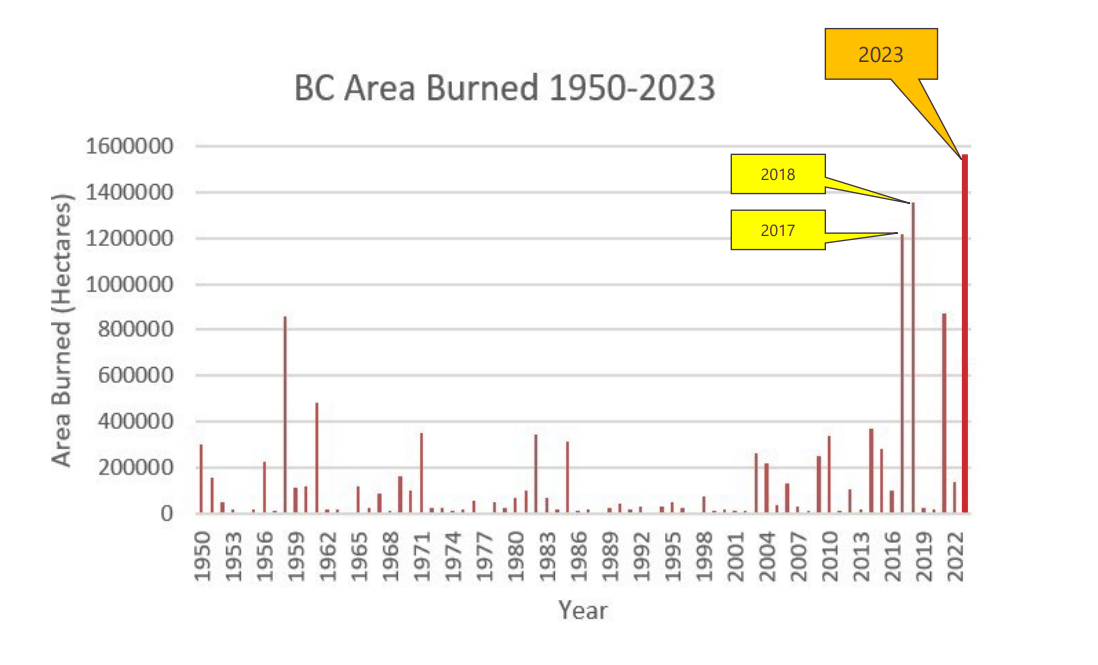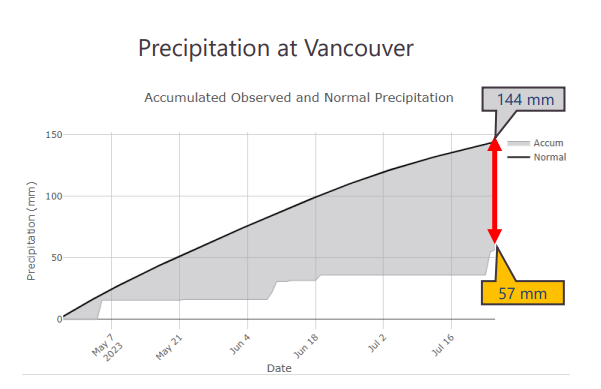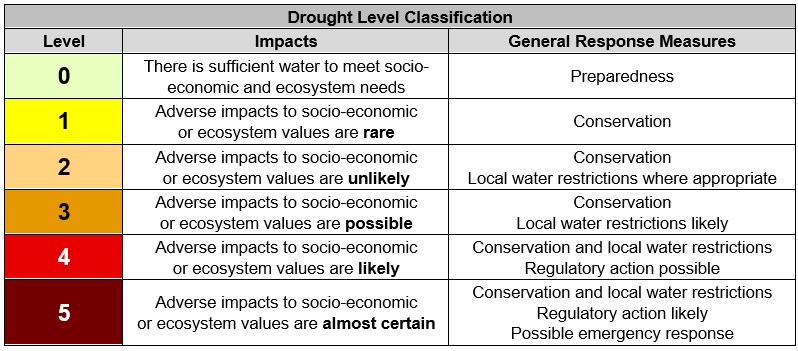B.C. wildfires burn record 1.5M hectares, firefighting efforts shift to Cariboo, Kamloops

Posted July 27, 2023 10:23 am.
Last Updated July 27, 2023 6:59 pm.
Wildfires have scorched a devastating number of hectares already this year, according to the B.C. government.
The province said Thursday that so far this season, a record 1.5 million hectares have burned in B.C., accounting for more than 70 per cent of all areas burned across Canada.
Minister of Emergency Management and Climate Readiness Bowinn Ma says while there may be the perception that recent cooler weather and showers have eased drought and wildfire challenges, “this is not the case.”
“While the rain did give our hardworking firefighters a chance to take a deep breath, the wildfire and drought situation remains largely unchanged due to the drought conditions we have been seeing since last summer.
“This is why I am calling on every British Columbian to remain vigilant and continue to follow all regional fire prohibitions and water restrictions. This is also incredibly important,” she said.

More than 1.5 million hectares have burned in B.C. in 2023. Far more than record breaking years of 2017 and 2018. (B.C. Government)
Ma says people need to be prepared and have a plan in place if they are required to evacuate their homes at short notice.
As of Thursday, there were more than 400 active fires in B.C., 277 of which sparked in the seven days prior. There are currently over 1,000 wildfires burning across the country.
Since April 1, there have been 1,496 wildfires in B.C. Year to date, there have been 4,765 wildfires in Canada.
Related Articles:
-
Several prominent wildfires burning in B.C.
-
Rain brings some relief to Metro Vancouver
-
Coastal B.C. to see rain, but BC Wildfire Service ‘not counting on it’ for fighting blazes
According to the province, recent progress has been made against the fires. Seventy per cent of wildfires are now classified as “out”, “under control”, or “being held”.” More than half of the 70 per cent are “out.”
“Due to recent weather, the northern half of the province has seen a slight reset,” the province explained. “Our focus is shifting south, to the South Cariboo, Kamloops Fire Centre, and Southeast Fire Centre.”
Ma explains that as of 3 p.m. Wednesday, approximately 1,060 people were under evacuation orders, and another 5,430 under evacuation alerts — most of which are in the central and southeast regions of B.C.
“My thoughts are with everyone that is under an evacuation order or an evacuation alert.”
“I know that this is an extremely stressful and uncertain time. Emergency Support Services are readily available to lend a helping hand to those who have been evacuated and need assistance. I would like to remind everyone that if your community is placed under an evacuation order, you must evacuate the area immediately. Your local authority or First Nation will provide information on evacuation routes and evacuation reception centers.”
The province adds that resource numbers in the northern half of B.C. “remain high.”
While much of the B.C. South Coast saw some rain and precipitation over the weekend and earlier this week, the province says there are still “ongoing, deep drought conditions.”
It explains that Vancouver has seen less than 40 per cent of its normal rainfall over the past three months.

Vancouver’s precipitation levels are 40 per cent of normal. (B.C. Government)
Despite the drenching in some areas, some regions have seen an increase in their drought-level ranking.
The Salmon River region is now sitting at a drought Level 5, the highest level in the province’s six-level system which begins at Level 0.
The Upper Columbia and Similkameen have now moved into a Level 4 drought ranking, meaning “adverse impacts to socio-economic or ecosystem values are likely.”

B.C. drought levels. (Courtesy B.C. Government)
“The recent rainfall we received is much welcomed but it wasn’t enough to have a meaningful impact on our drought conditions,” Ma explained.
B.C. explains more than 25 per cent — 23 of 34 water basins — of the province is at either Level 4 or Level 5 — the latter suggesting “adverse impacts to socio-economic or ecosystem values are almost certain.”
The province says it is forecasting continued warm weather, as its seasonal forecast indicated a likelihood of “warmer than normal summer temperatures.”
“Seasonally, July and August are dry months with expected declining streamflow in most regions.”
Ma is extending gratitude and thanks to firefighters and crew members who are on the frontlines of wildfire fighting efforts. The province currently has over 3,000 personnel directly engaged in fighting the fires, including nearly 600 from out of province.
“On Sunday, I had the honour of greeting 50 of the 100 firefighters from Brazil and extending our thanks on behalf of our province. We are very fortunate to have support from federal partners and international partners, which is bolstering our efforts with much-needed resources,” Ma said.








